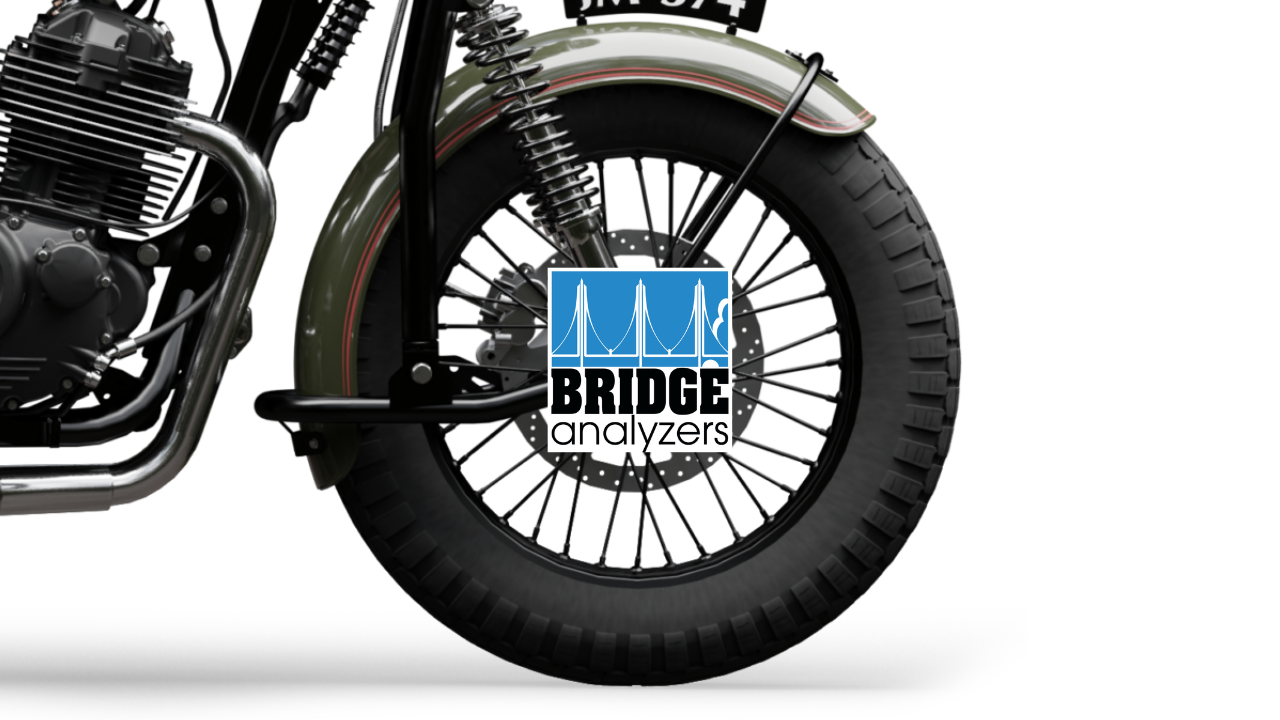Whether you are a mechanic, motorcyclist, or car enthusiast, getting the highest performance out of your machine is most likely one of your top priorities. Whether the machine you are working on has a fuel-injection system or is running on a carburetor, a high-quality exhaust gas analyzer is an essential tool to have if you are going to understand how to toggle your air-to-fuel ratio and confidently tune any vehicle you are working on. But before we discuss how our Bridge Exhaust Gas Analyzers can help you tune your engine, let’s first review some combustion fundamentals.
What is Air-to-Fuel Ratio and Why is it Important for Motorcycle Tuning?
The air-to-fuel ratio (AFR) is an important factor to consider when tuning a motorcycle. It refers to how much fuel and air are mixed together in the engine’s combustion chamber. The ideal AFR ensures maximum engine performance and protects against engine deterioration.
An ideal air-fuel ratio (AFR) for a motorcycle engine is typically in the range of 14.7:1, which means that there should be 1 part of gasoline for every 14.7 parts of air. This is referred to as the stoichiometric ratio, which is the ideal ratio for complete fuel combustion. AFRs that are denser (more air, less fuel) or richer (more fuel, more air) than these can lead to engine problems.
Engine banging can be brought on by a lean AFR, and over time, this can harm the engine. Incomplete combustion happens when there isn’t enough fuel to totally burn with the air. Additionally, this may result in a rise in engine temperature and a loss of power.
A rich AFR, on the other hand, can result in a buildup of carbon on the spark plugs and in the exhaust system, which lowers engine performance and raises emissions. Additionally, it may result in a reduction in fuel efficiency and an increase in gasoline usage.
When working on motorcycles, the Air-to-Fuel ratio can be changed either by modifying the fuel injection system or by manually adjusting each carburetor. This process will require some trial and error by the technician in order to get it dialed-in to the desired ratio. Different tools can be useful when playing with AFR. For instance, a Bridge 5 Gas Analyzer when used in tandem with a programmable electronic control unit (ECU) is a great way of tuning motorcycles for either efficiency or top-level performance.
When tuning a motorcycle, the air-to-fuel ratio is a crucial factor to take into account. AFRs that are either richer or leaner than the advised 14.7:1 ratio can damage engines and raise pollutants. Modifying the carburetor or fuel injection system can be used to optimize the AFR, which is essential for optimum engine performance.
Factory Tuning vs. Performance Tuning
Factory-tuned equipment is tuned for emissions compliance rather than for peak performance. In order to comply with EPA regulations for exhaust emissions, factory tuning is frequently set closer to “ideal” stoichiometric levels, which means it is tuned toward the lean side and hence produces less “real-world” exhaust gas. Factory tweaking essentially trades off performance for efficiency.
Performance tuning, on the other hand, forgoes efficiency in favor of power and performance. Performance and power-oriented vehicles are tuned to the rich side, causing them to emit more secondary gases (CO, HC, NOx, O2) but also enabling you to accelerate more quickly and reach higher top speeds.
Conclusion
Whether you’re tuning for performance or efficiency our line of Bridge 5 Gas Exhaust Gas Analyzer is the tool you need. While you can use it to test for efficiency and EPA compliance, many of our motorcycle customers use it for performance tuning purposes.
